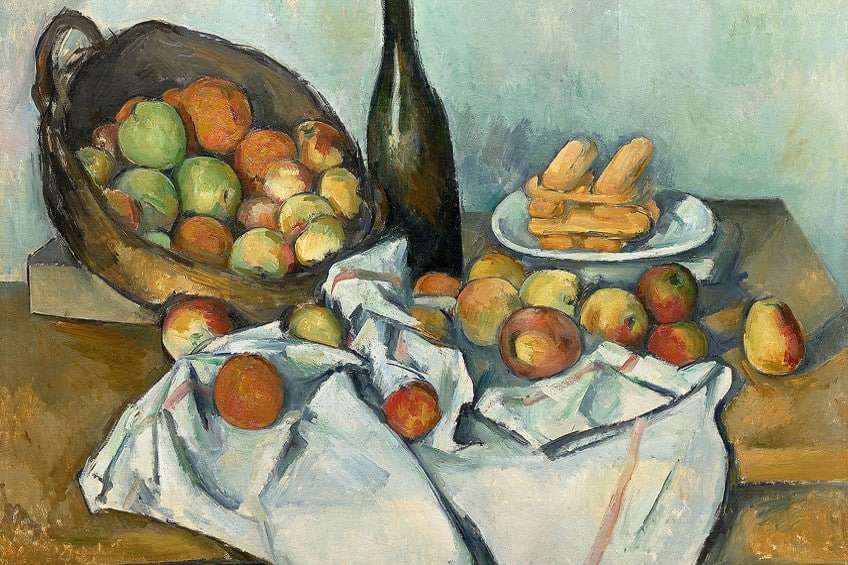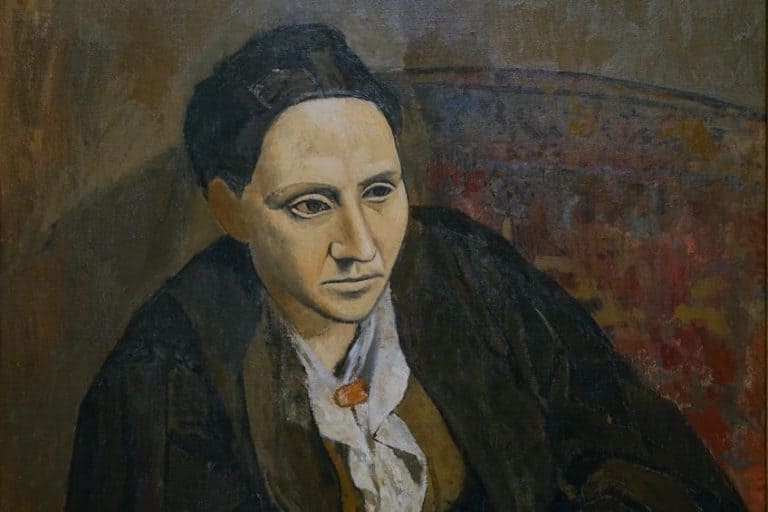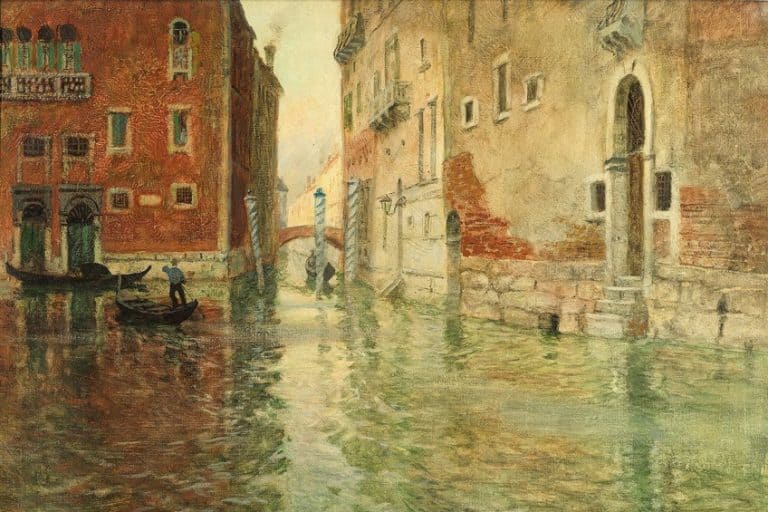“The Basket of Apples” by Paul Cézanne – A Closer Look
Paul Cézanne was a seminal artist during the 19th century Post-Impressionist movement and inspired artists like the famous Cubist Pablo Picasso. Read more as this article explores one of his still life paintings, The Basket of Apples (c. 1893), and how it is a fine example of the artist’s painting techniques that pushed beyond the limits of Academic art into new artistic frontiers.
Artist Abstract: Who Was Paul Cézanne?
Paul Cézanne was a Post-Impressionist painter from Aix-en-Provence in France He was born on January 19, 1839, and died of pneumonia on October 22, 1906. He was known for his influence on the Cubist art movement and for depicting his subject matter from unique perspectives. He focused on constructing his compositions on the fundamental building blocks like shape and form and utilized color and brushstroke to convey these too.
Examples of his paintings are The Vase of Tulips (1890), The Card Players (1890 – 1892), The Large Bathers (1898 – 1906), Apples and Oranges (1900), and Mont Sainte-Victoire (c. 1905).
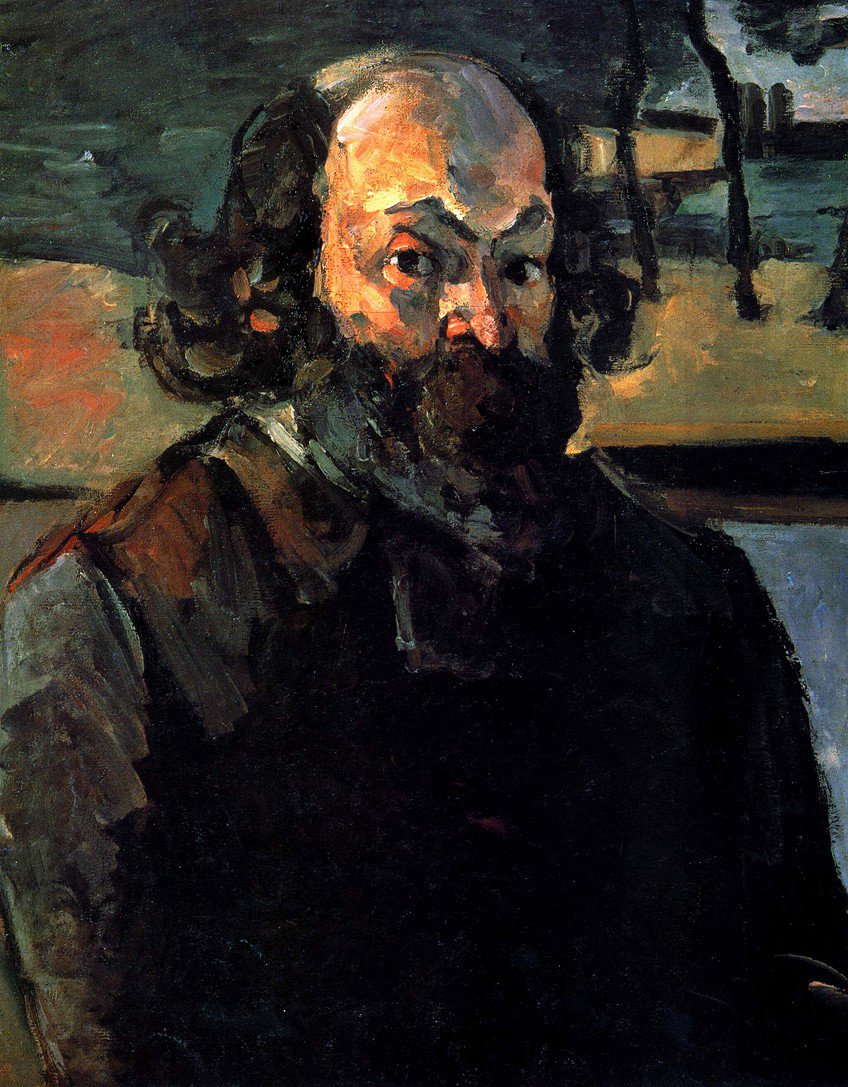
The Basket of Apples (c. 1893) by Paul Cézanne in Context
| Artist | Paul Cézanne (1839 – 1906) |
| Date Created | c. 1893 |
| Medium | Oil on canvas |
| Genre | Still Life |
| Period/Movement | Post-Impressionism |
| Dimensions (centimeters) | 65 x 80 |
| Series/Versions | N/A |
| Where Is It Housed? | Part of the Helen Birch Bartlett Memorial Collection of the Art Institute of Chicago, Illinois, United States |
| What It Is Worth | Estimated worth is over $100 million |
In the analysis of The Basket of Apples by Paul Cézanne, you will read more about when it was painted and how the artist chose to depict it. The latter will be discussed in terms of the subject matter and the art elements, all composed in Cézanne’s unique artistic style and techniques.
Contextual Analysis: A Brief Socio-Historical Overview
The Basket of Apples by Paul Cézanne was just one of numerous of the artist’s still life compositions, although he also painted landscapes and portraits. It was produced around 1893, which is when Cézanne was in his 50s and already established in his artistic style as many have noted, and an important Post-Impressionist artist.

Along with other of Cézanne’s artworks, his still life with apples, The Basket of Apples, was exhibited during the artist’s solo exhibition in November/December of 1895 at the art gallery that belonged to Ambroise Vollard, who was one of the foremost French art dealers of his time, and instrumental in Cézanne’s exposure as an artist.
Formal Analysis: A Brief Compositional Overview
In the formal analysis below, you will read a visual description of the subject matter of The Basket of Apples by Paul Cézanne, which is a rich and textured still life of apples, a bottle, and several stacked cookies, all composed from a unique set of angles so well attributed to Cézanne’s artwork. The composition will be described in terms of how the formal qualities, like the colors, types of texture, line, shape, and forms are depicted and how the space is utilized in terms of its perspective.

Subject Matter: Visual Description
The Basket of Apples by Paul Cézanne depicts a somewhat tilted tabletop with an array of foodstuff on it. On the left is a propped-up round basket, leaned against what appears to be a small block-like object underneath it. There are several green and red apples in the basket, all rolled downward following the basket’s angle. There are more apples on the table’s top that appear to have rolled out of the basket.
Some of these apples are positioned on, and nestled in between the folds, of a white crumpled tablecloth, which is partially hanging over the table in the foreground, while other apples are on the table itself.

On the right side of the basket, and almost leaning against it, is a dark bottle, possibly a wine bottle. On the right of the bottle, and further into the back of the table is a small white plate with rectangular-shaped cookies stacked on top of one another. The background appears to be a neutral-colored wall, which the table is positioned against. There are no other indications of objects other than the table and foodstuff on it. Cézanne’s signature is visible in the bottom left corner.
Color
The color composing The Basket of Apples by Paul Cézanne is a wide variety of pigments that all create a rich textural display. Some of the pigments include lead white, Prussian blue, ultramarine blue, viridian, and others. The apples’ colors are red, orange, yellow, and green. The tablecloth, on closer inspection, is a combination of light blue, green, pink, yellow, and some gray and red.
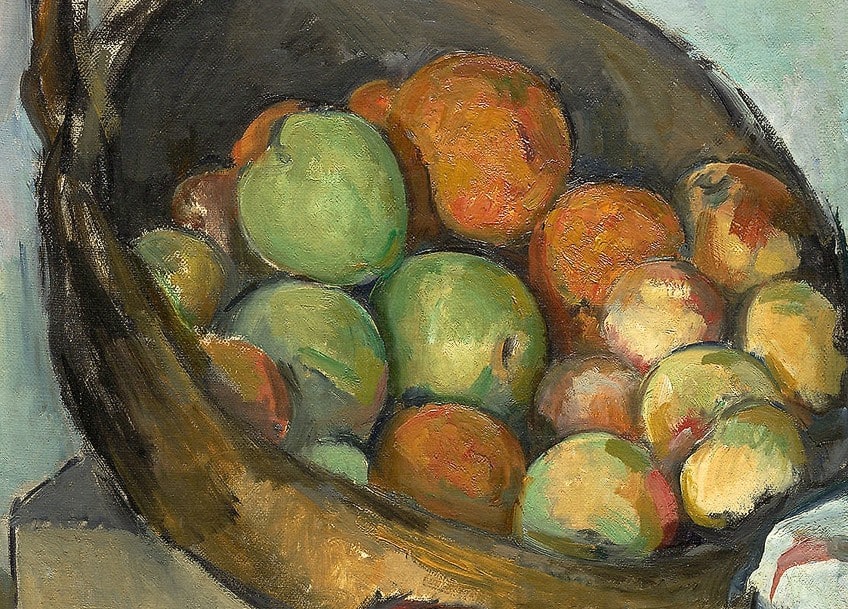
Texture
Paul Cézanne’s brushstrokes are tactile and visible in The Basket of Apples painting. The artist applied thick and expressive brushstrokes. The brushstrokes also create the types of lines and shapes. For example, notice how they delineate the apples, also through various colors, Cézanne created their rounded shape with the curved contours of the brushstrokes.
There is also a sense of implied texture through Cézanne’s utilization of brushstrokes and coloring.
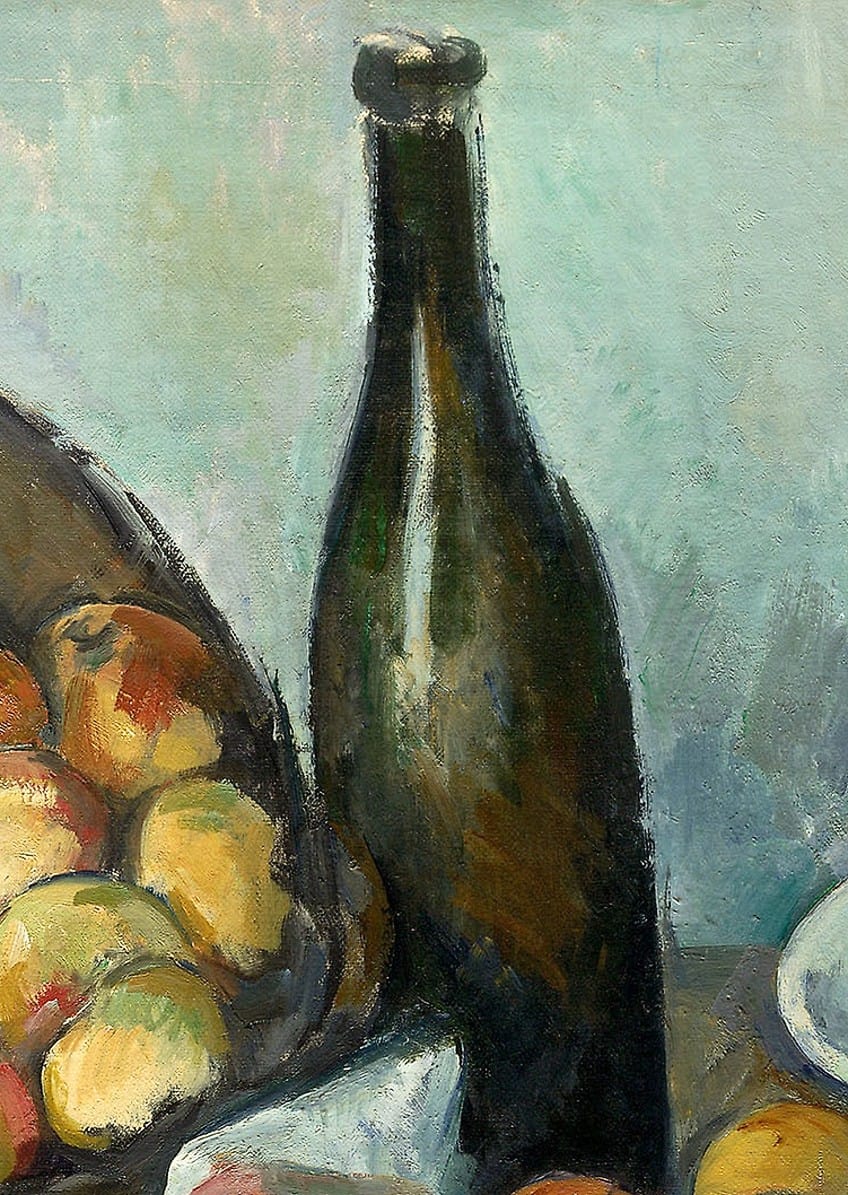
For example, through shading and light on the apples, they appear almost smooth with a glisten on their skin. Notice the roughed, and lighter-colored, brushstroke running along the bottle, which indicates a sense of light, and the impression of glass.
Line
There are varieties of lines in The Basket of Apples by Paul Cézanne, and as mentioned above, these are also created by the contours of the brushstrokes and the varying textures. Some of the lines include irregular and more naturalistic lines, for example, the curved lines of the apples or the straight and almost zig-zagged lines from the tablecloth’s folds. There are also short, long, thin, and thick lines, including the darker outlines visible along the tablecloth’s edges. All of these combine to create a harmony of expressive lines and outlines towards the whole of the composition.

Shape and Form
As with the varieties of lines in The Basket of Apples by Paul Cézanne, there are also various shapes and forms, created from other art elements like color and texture. Notably the rounded, almost spherical, forms of the apples. Other examples include the cubic form of the prop under the basket, the rectangular ovular shape of the cookies, and the irregular shape of the bottle.
An angular shape is evident on the back right edge of the table on the right side of the composition.
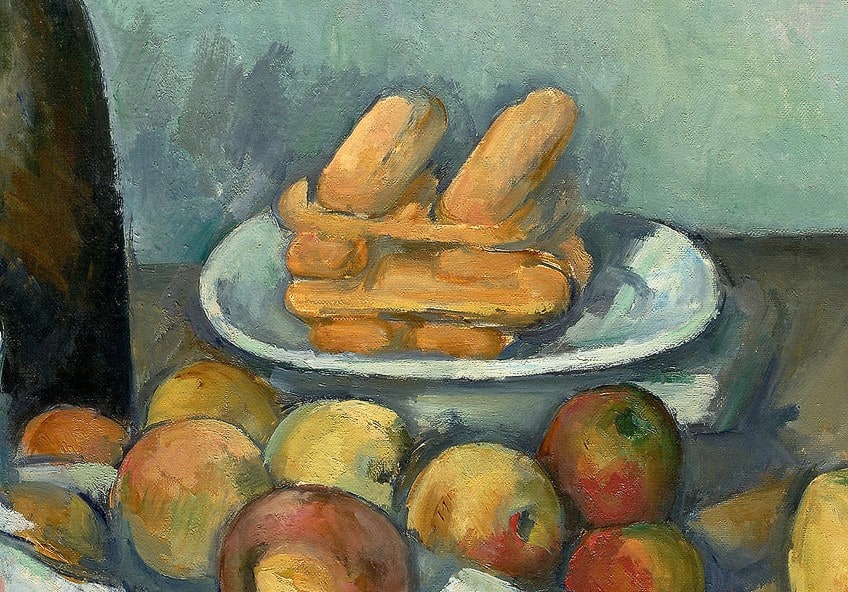
Space
Space is utilized in a peculiar manner in The Basket of Apples by Paul Cézanne. The artist depicts several perspectives. The scene depicts the frontal view of a table against a wall with a basket of apples, however, the basket’s angle provides us, the viewers, with almost a bird’s eye-view, as we can see inside of it. Furthermore, the table appears at an angle too, which depicts the bottle appearing to be leaning against the basket, as if it might fall over. The top layer of cookies also appears from a bird’s eye view, while the bottom layers appear from the side.
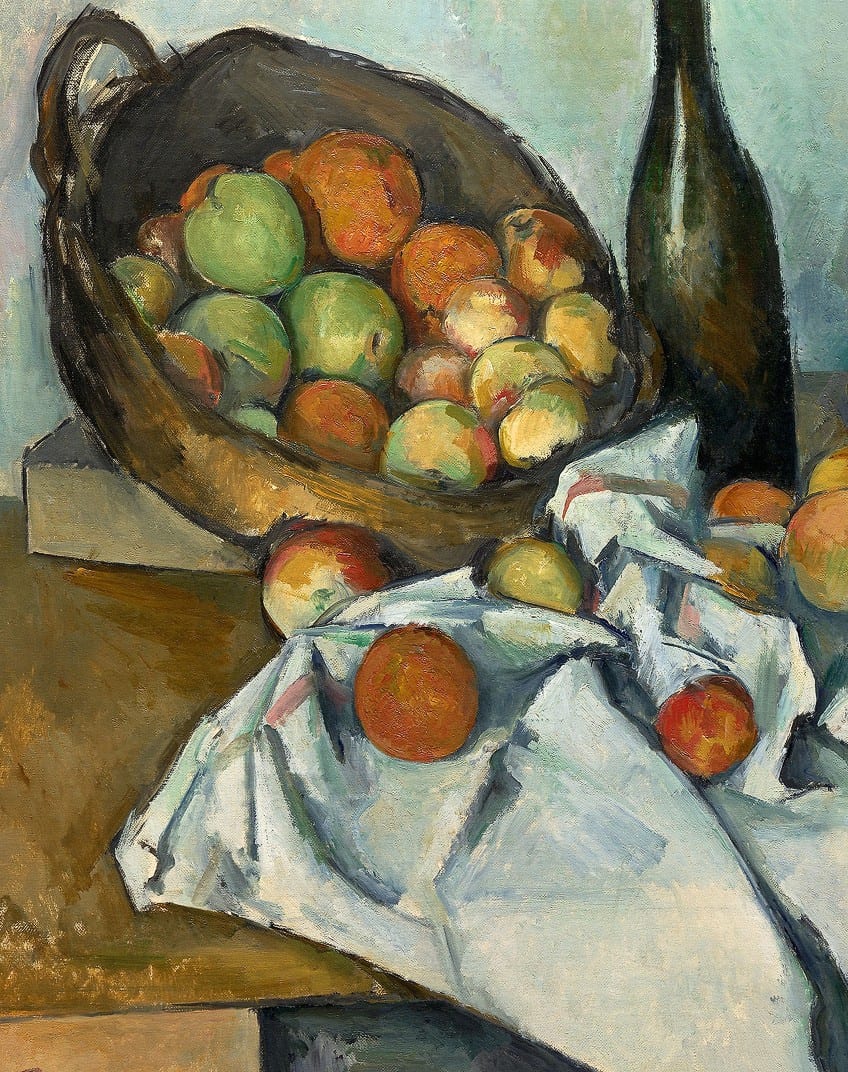
Cézanne depicted a sense of depth in this still life with apples utilizing other art elements like color and shading, for example, notice the darker areas and outlines on the tablecloth, which indicates their folds. These angles are characteristic of Cézanne’s artworks, and what set him apart from the Academic art rules of perspective, notably linear perspective.
Seeing It from a Different Angle
The Basket of Apples is just one example of what made Paul Cézanne’s artistic oeuvre so important. He was regarded as the “father of modern art” because of his innovative approaches to depicting perspective, as seen in The Basket of Apples painting.
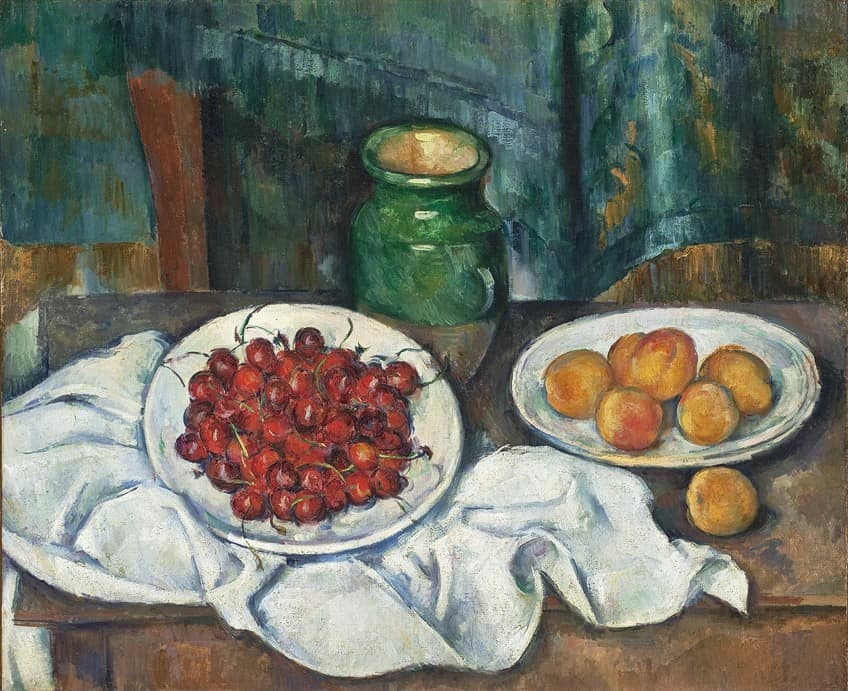
Cézanne did not approach his still life paintings from the same linear perspectives you will find from more classical or Academic art. In The Basket of Apples, the artist depicted the scene in a strange-seeming manner, and from multiple perspectives, but each angle and viewpoint were intended to be there.
The Basket of Apples by Paul Cézanne is a painting that demonstrates the artist’s depth and knowledge of artistic skill and technique. It is a testament to how far he progressed in his artistic career and lifetime. Cézanne also left an artistic legacy that rippled into future artistic movements, questioning the ways of art making and seeing things from a different vantage point.
Frequently Asked Questions
Who Painted The Basket of Apples?
The Post-Impressionist painter, Paul Cézanne, created the oil on canvas titled The Basket of Apples (c. 1893). It was one of many of the artist’s still life paintings that depicted his unique utilization of colors, textures, and perspective.
Where Is The Basket of Apples?
The artwork is located at the Art Institute of Chicago, reportedly since 1926, and is part of the Helen Birch Bartlett Memorial Collection. Although the price is uncertain, it has been suggested to hold a value of over $100 million.
What Makes The Basket of Apples by Paul Cézanne So Unique?
Multiple perspectives, compared to the classical linear perspectives from Academic art, are depicted in The Basket of Apples (c. 1893). There are also rich colors and textures, all contributing to the painting’s skilfully rendered composition, which is what made it one of the modern masterpieces of art.
Alicia du Plessis is a multidisciplinary writer. She completed her Bachelor of Arts degree, majoring in Art History and Classical Civilization, as well as two Honors, namely, in Art History and Education and Development, at the University of KwaZulu-Natal, South Africa. For her main Honors project in Art History, she explored perceptions of the San Bushmen’s identity and the concept of the “Other”. She has also looked at the use of photography in art and how it has been used to portray people’s lives.
Alicia’s other areas of interest in Art History include the process of writing about Art History and how to analyze paintings. Some of her favorite art movements include Impressionism and German Expressionism. She is yet to complete her Masters in Art History (she would like to do this abroad in Europe) having given it some time to first develop more professional experience with the interest to one day lecture it too.
Alicia has been working for artincontext.com since 2021 as an author and art history expert. She has specialized in painting analysis and is covering most of our painting analysis.
Learn more about Alicia du Plessis and the Art in Context Team.
Cite this Article
Alicia, du Plessis, ““The Basket of Apples” by Paul Cézanne – A Closer Look.” Art in Context. January 5, 2024. URL: https://artincontext.org/the-basket-of-apples-by-paul-cezanne/
du Plessis, A. (2024, 5 January). “The Basket of Apples” by Paul Cézanne – A Closer Look. Art in Context. https://artincontext.org/the-basket-of-apples-by-paul-cezanne/
du Plessis, Alicia. ““The Basket of Apples” by Paul Cézanne – A Closer Look.” Art in Context, January 5, 2024. https://artincontext.org/the-basket-of-apples-by-paul-cezanne/.


